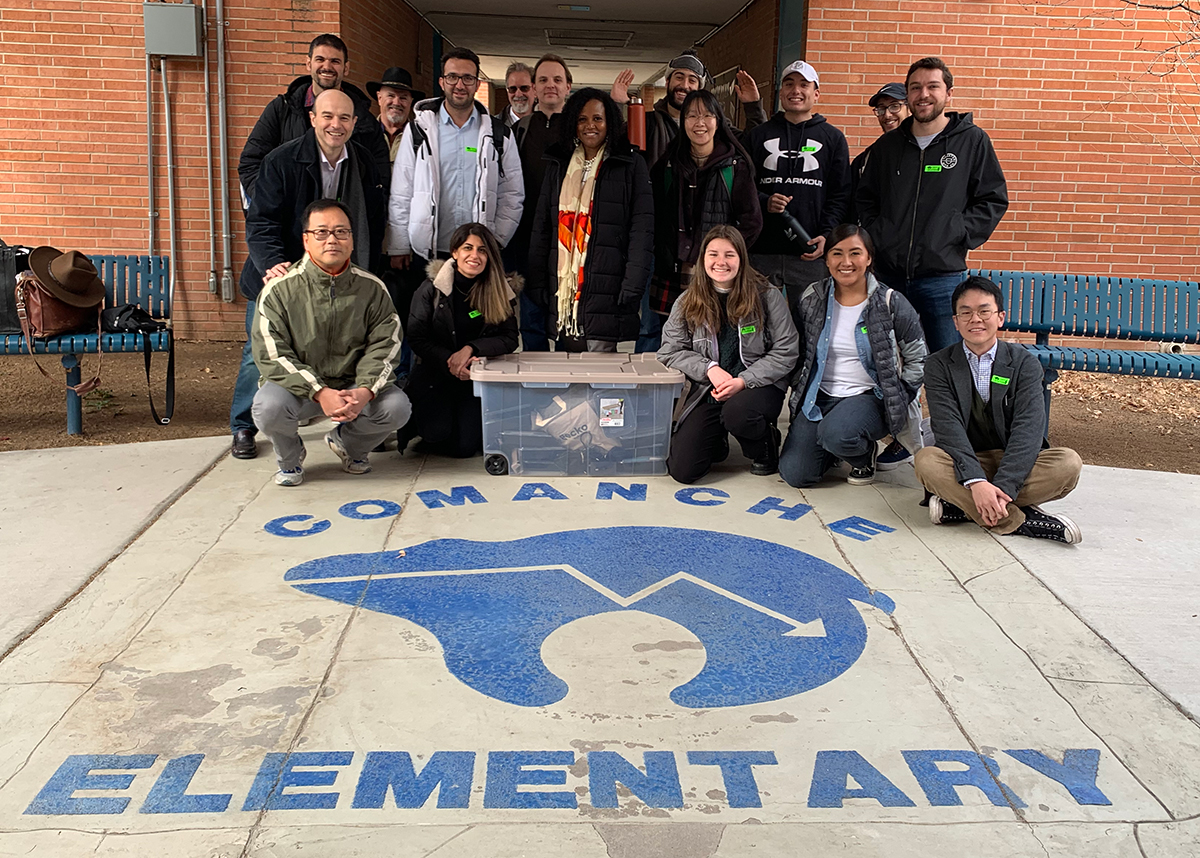Recent News
Ferenchak named chair of Transportation Research Board Pedestrian Committee
October 31, 2025
Ferenchak named APBP 2025 Research Professional of the Year
October 1, 2025
UNM professor to speak at TEDxABQ event
September 24, 2025
NSF funds research to investigate whether treated wastewater can help mitigate water scarcity in arid regions without compromising river ecosystem health
September 2, 2025
News Archives
Smart Railroads project engages local elementary students in STEM
February 15, 2023 - by Kim Delker

Smart Railroads, an ongoing project with researchers from The University of New Mexico, Florida State University and Stanford University, is striving to attract K-12 students into STEM (science, technology, engineering and math) disciplines using the nation’s rail system. And recently, the group introduced the project into a local elementary school.
The three-year project, led at UNM by Fernando Moreu, an associate professor in the Department of Civil, Construction and Environmental Engineering, utilizes his extensive research and outreach efforts in sensor technology to offer an engaging way to provide hands-on activities for students while introducing them to STEM.
In January, UNM organized a workshop to share the results of the first year of the project with all three universities and the project manager from the Federal Railway Administration, Monique Stewart. They invited industry partners (including Sandia National Laboratories, BNSF, Rail Runner and Quiroga Pfeiffer Engineering Corporation) to participate in one of the sensor workshops and also provided their inputs to the program to Stewart and the other principal investigators.
And recently, with the help of the third-grade teachers at Comanche Elementary School in Albuquerque, the collaborative team, along with a group of UNM students, taught 54 elementary students how to build the Low-Cost Efficient Wireless Intelligent Sensor (LEWIS) sensors and then took a train to conduct an experiment to measure the vibration of the train. The third-graders were able to build the 18 sensors in less than 15 minutes, Moreu said.
In addition, Moreu and others led presentations at UNM on the goals for research and education with the railroads and diversity. A project manager from Sandia, John Pott, introduced the students to laboratory, and Lee Hostler, retired from BNSF, encouraged the future railroaders to build sensors for the train ride. Stewart provided the support from Secretary of Transportation Pete Buttigieg toward a diverse and supportive work environment that will transform the traditional definition of railroad workers, Moreu said.
In summer 2022, the group organized several activities for K-12 students, including a field trip on the Rail Runner where middle and high school students conducted an experiment that measured the Rail Runner's trek from Albuquerque to Santa Fe using a motion sensor. Other activities so far have included a dance experiment using sensors and a trip to the Sandia Tramway that measured the tram’s movement with sensors.
Moreu, who manages the UNM Smart Management of Infrastructure Lab (SMILab), said that sensors are a perfect tool to teach students of all ages about how to use technology in everyday life, in addition to teaching them about railroads and collecting real-time data.
“This technology can be easily integrated into educational programs and help students understand the science behind railroads, including physics, engineering and data analysis. One of the primary benefits of using low-cost sensors in K-12 rail education is that it allows students to visualize the concepts they are learning. By seeing the data generated by the sensors, students can better understand how trains move, why they travel at certain speeds and how various factors can impact their journey.”
He said the data can also be used to spark discussions about the efficiency of rail transportation and how it compares to other modes of transportation.
“The future of sensors and railroads is bright and holds endless possibilities,” Moreu said. “Advancements in technology will lead to more efficient and safer rail transportation, with sensors playing a crucial role in monitoring and improving the system. So we would like to be part of this journey and contribute to the future of the younger generation!”
